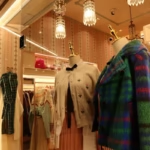In a world where everything seems to be digital — from banking to dating to entertainment — a quiet countertrend is emerging. More people are turning back to analog experiences: vinyl records, paperback books, handwritten letters, and film photography. What was once dismissed as outdated is now seen as refreshing, mindful, and even luxurious.
So, why are so many young people, digital natives no less, choosing to unplug from their screens in favor of something slower and simpler? The answer may lie in our collective craving for depth, presence, and a little bit of nostalgia.
Reclaiming Focus in a Distracted World
Digital life is fast, convenient, and endlessly stimulating — but it can also be overwhelming. Notifications, scrolling, and constant multitasking chip away at our ability to concentrate. Analog experiences offer the opposite: focus and immersion.
When you read a physical book, you can’t click away from it. You either turn the page or put it down. That simplicity becomes a form of mindfulness, encouraging the brain to slow down and process information more deeply.
It’s no surprise that bookstores, libraries, and record shops are seeing a revival. The physical act of browsing — of touching, selecting, and owning — adds value that can’t be replicated on a screen.
Physical Things Feel More Real
In a time when most of our lives are virtual, tangible experiences feel grounding. A paper notebook doesn’t disappear with a dead battery. A printed photo doesn’t get lost in a cloud storage folder. There’s emotional weight to physical objects — they capture moments and memories in a more personal way.
This is especially true for hobbies. People are buying instant film cameras, building scrapbooks, collecting vintage board games, and even investing in retro gaming consoles. Analog hobbies aren’t just distractions — they’re satisfying rituals that bring presence into daily life.
Analog as a Lifestyle Statement
Choosing analog isn’t just a personal preference — it’s becoming a lifestyle identity. Just as some wear minimalist fashion or eat organic food, others proudly live “low-tech.” They carry paperback novels, use analog clocks, and write their schedules by hand.
There’s even a certain aesthetic to it — cozy, nostalgic, curated. On social media platforms like TikTok and Instagram, entire accounts are dedicated to analog journaling, letter writing, and curated music corners featuring record players and cassette tapes.
This isn’t about rejecting modern life altogether. It’s about creating balance — carving out moments of analog calm within a digital world.
The Joy of Tactile Entertainment
Entertainment is evolving too. While streaming and mobile games remain popular, there’s a renewed appreciation for interactive, tactile fun — the kind that doesn’t involve blue light or push notifications.
Board games, puzzles, tabletop role-playing games, and analog card decks have seen a major resurgence in recent years. People enjoy the face-to-face interaction, the shared laughter, the real-time strategy — all of which are hard to replicate online.
At the same time, some platforms are successfully blending both worlds. For instance, those who enjoy classic casino-style games might explore digital spaces that preserve the look and feel of traditional machines, such as slots at pafbet. These kinds of hybrid experiences offer the tactile joy of old-school gaming, presented through the convenience of modern tech — especially when approached with awareness and moderation.
Slowing Down Is the New Luxury
Perhaps the biggest appeal of analog is that it gives us permission to slow down. In a culture that celebrates hustle, speed, and optimization, deliberately choosing slowness is a rebellious act — and increasingly, a luxurious one.
People are taking time to cook from scratch, grow their own herbs, write long letters, or paint with watercolors. These acts aren’t about productivity; they’re about presence. They’re small rituals of self-care in a world that’s always telling us to do more, faster.
How to Bring More Analog Into Your Life
You don’t have to go completely off-grid to enjoy the benefits of analog living. Start with small swaps:
- Read a physical book before bed instead of scrolling your phone
- Keep a handwritten journal or gratitude notebook
- Write to a friend instead of texting
- Use a paper planner instead of a digital calendar
- Print out your favorite photos and hang them on your wall
The goal isn’t to eliminate technology, but to balance it with moments of tactile joy — to remember what it feels like to do things with your hands, your eyes, and your full attention.
Conclusion: A Simpler Future
In many ways, analog is the new modern. As we move deeper into the digital age, our desire for something slower, quieter, and more meaningful will only grow. Analog living isn’t about going backward — it’s about choosing when and how we go forward.
And sometimes, progress means pressing pause.







